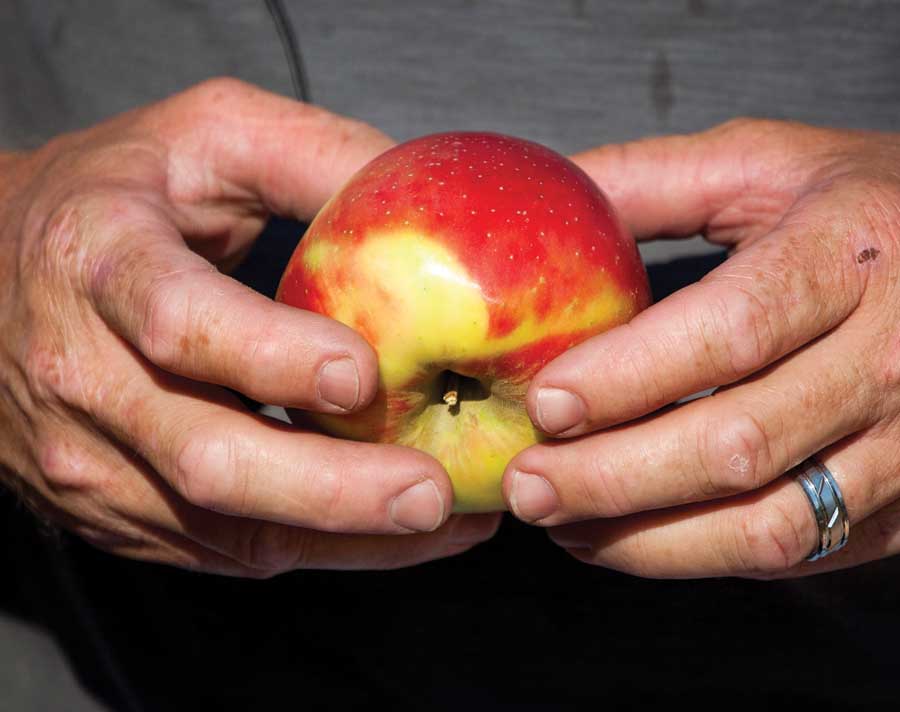A University of Minnesota researcher has found new answers to the origin of Honeycrisp and if apples had blood, this blood would be blue.
Released in 1991, Honeycrisp was thought to be the child of Macoun and Honeygold, but researchers in 2004 discovered that the original parentage information was wrong. Determining the origins came later when researchers acquired new DNA tools and genetic information.
Now a Minnesota graduate student, Nick Howard, has used DNA tools to uncover the apple’s true lineage.

Howard has confirmed that Honeycrisp is the offspring of Keepsake and an unreleased selection, MN 1627. His research identified Duchess of Oldenburg and Golden Delicious as “grandparents” on the MN 1627 side. Duchess of Oldenburg was brought to the U.S. from England in 1835.
Here’s an excerpt from a University of Minnesota article:
Howard’s research confirmed that Honeycrisp is the child of Keepsake and discovered that the other parent is an unreleased University of Minnesota selection, MN1627. Though MN1627 is no longer available, finding this connection allowed Howard to further identify Duchess of Oldenburg and Golden Delicious as grandparents through the MN1627 side, ultimately connecting Honeycrisp to many cultivars of worldwide significance.
Howard’s findings are not only scientifically significant, but culturally significant as well. “It’s a lot like how a museum gives us a glimpse into the lives of people long ago,” says Howard. As it turns out, the pedigree of Honeycrisp stretches back to Europe. Duchess of Oldenburg was brought to the U.S. from England in 1835, but potentially originated far earlier in Germany or Russia. “Duchess of Oldenburg is still grown in specialty orchards, so you could go to this orchard in the early summer and experience firsthand the apple that is part of the genetic bedrock of the UMN apple breeding program.”
The ability to connect Honeycrisp to its pedigree will help us better understand the genetic underpinning of its crisp texture, leading to the development of even better apples than before. For years Honeycrisp’s pedigree has remained hidden in shadow, but now it can sit proudly among its family tree.






Leave A Comment